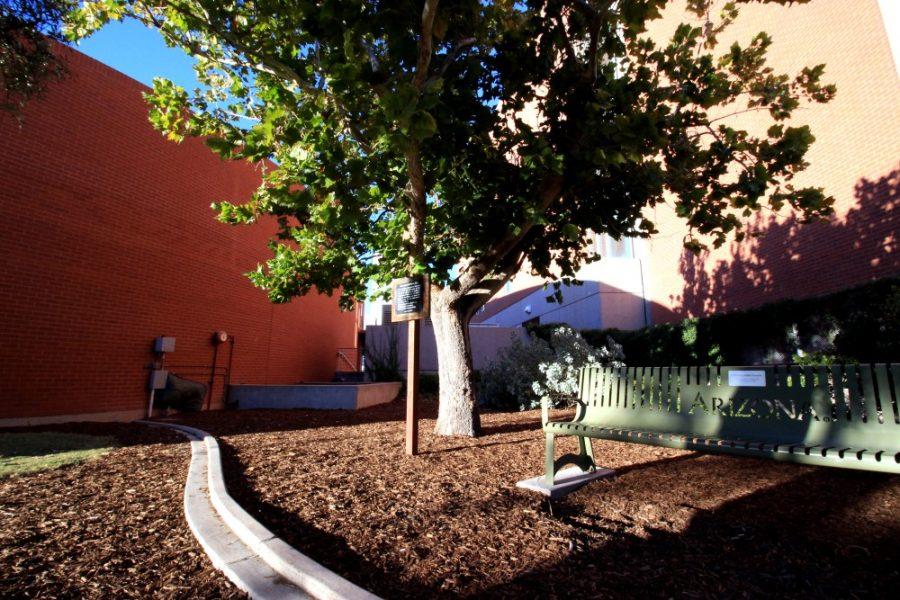Between Kuiper Space Sciences and Flandrau Science Center and Planetarium sits a seemingly unimpressive sycamore tree that has extraterrestrial origins. Apollo 14 astronaut Stuart Roosa chose to take 500 tree seeds of five different species on his Apollo mission, which orbited the moon 34 times before coming safely back to Earth. The seeds were planted around the world in 1976 and dubbed “Bicentennial Moon Trees” in honor of America’s 200th anniversary.
A ceremony for the tree took place Friday, Oct. 30 and was the collaborative effort of three UA departments: the Campus Arboretum, the Poetry Center and the Lunar and Planetary Laboratory. Several UA directors spoke at the event including Tanya Quist, director of the Campus Arboretum; Tyler Meier, director of the UA Poetry Center; and Tim Swindle, director of the Lunar and Planetary Laboratories. The keynote speaker was Jack Roosa, son of astronaut Roosa.
The ceremony began with words from Quist who spoke about the Arboretum’s goal to promote stewardship and conservation, both for the UA campus and the world. Protecting and preserving the Moon Tree is an especially important goal for the Arboretum.
“The Arboretum has a particular interest in the Moon Tree; it’s one of our heritage trees,” said Quist “We feel really proud of [the Moon Tree] because it’s surviving. … I think that’s really attributed to our excellence in landscape management and excellent stewardship.”
The keynote speaker, Jack Roosa, shared tales of his father and addressed some of the mystery surrounding the moon trees. Jack’s father was a smoke jumper — a firefighter who parachutes into remote regions — and always had a special place in his heart for the U.S. Forest Service. Together with Edward Cliff, the Forest Service chief, Roosa packed up 500 seeds into his personal preference kit to be taken to the moon.
Jack Roosa also shared the mission of David Williams, an employee of NASA who is trying to find and document all of the moon trees. There have only been around 100 moon trees located to date, 27 of which have already perished, and one which sits humbly on our campus. As for the mysteries of the moon trees, Jack Roosa told the audience of two moon trees that were planted before NASA officially released the seeds and about a claimed moon tree in San Dimas, California, a sequoia tree, when Roosa did not carry any sequoia seeds on Apollo 14. Jack Roosa ended his talk by saying what a privilege it was to stand next to the unassuming tree that his father flew to the moon.
“The trees are the only living thing to commemorate man’s most impressive achievement,” he said.
The LPL has been closely tied with the Apollo program, so the Moon Tree has special meaning.
“Preparing for the Apollo landing was a big part of how the LPL got funded and the tree is a tangible piece of that history — a living representation of all the things that were going on [at the LPL] 50 years ago,” Swindle said.
The night concluded with Meier’s reading of the poem “Sycamore” by Wendell Berry, which was evocative of the night’s topic of the modest Moon Tree.
Follow Bailey Bellavance on Twitter.









